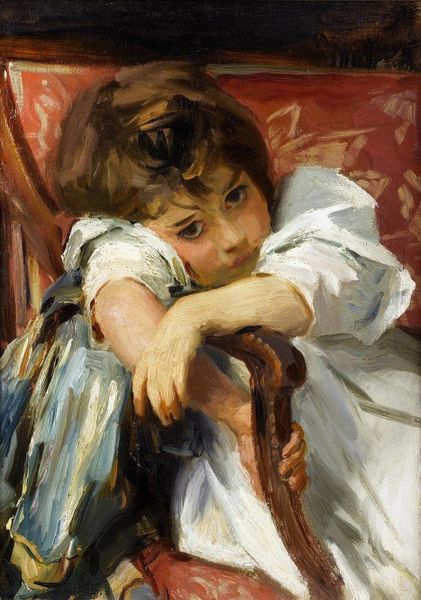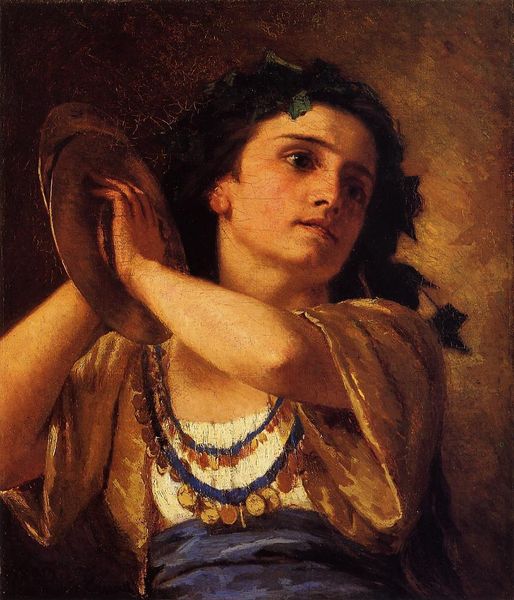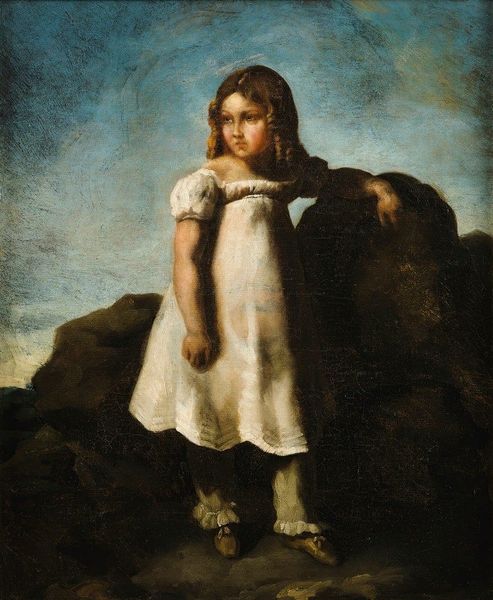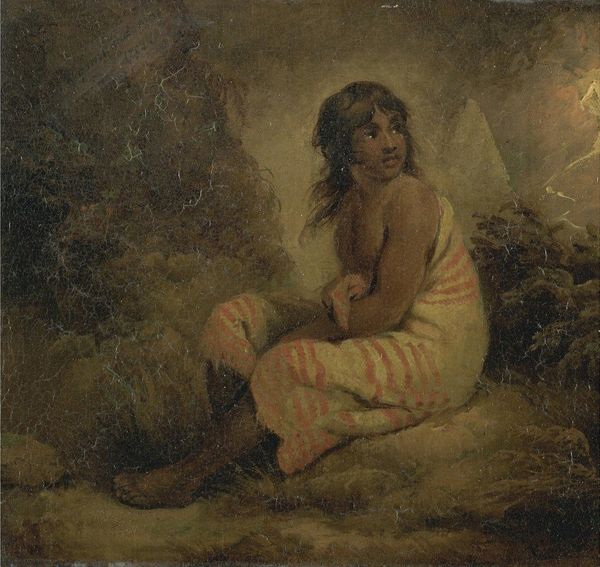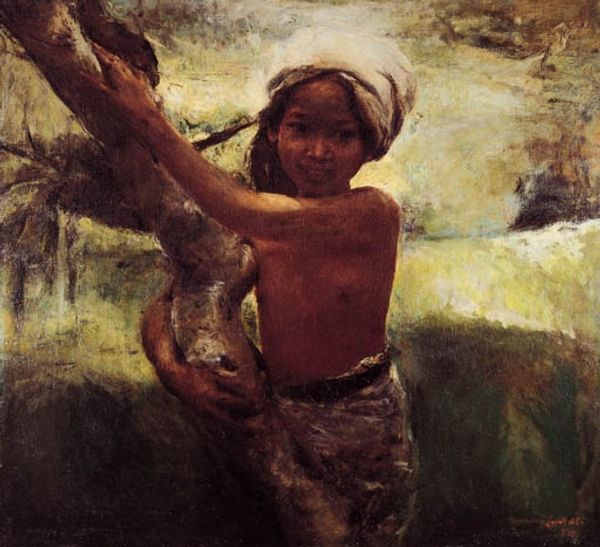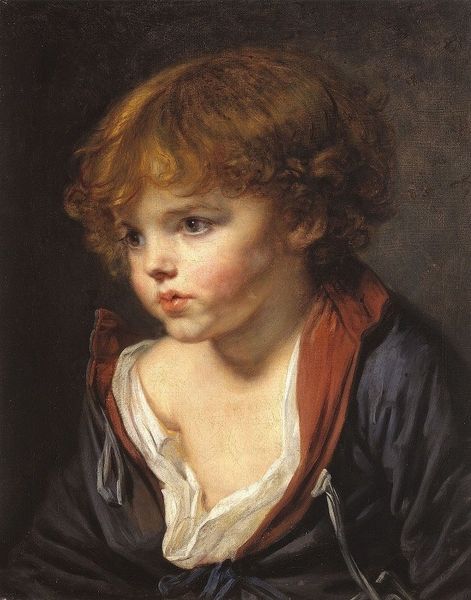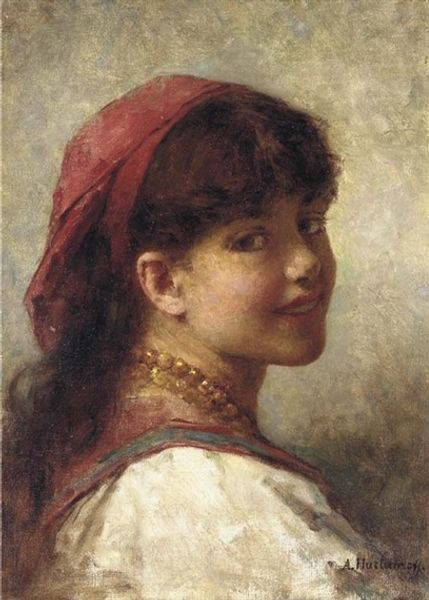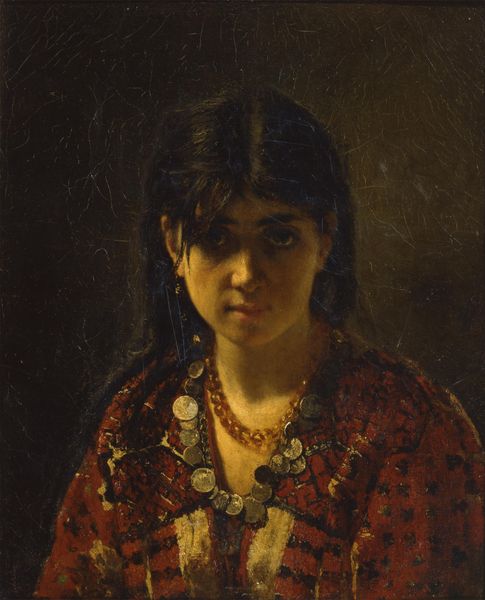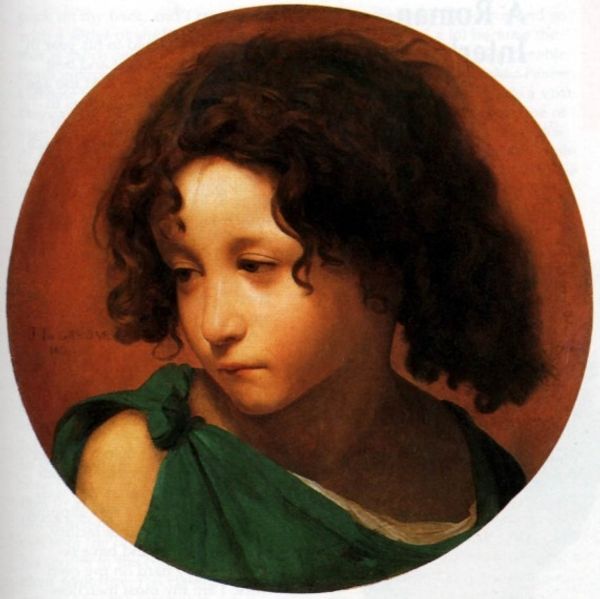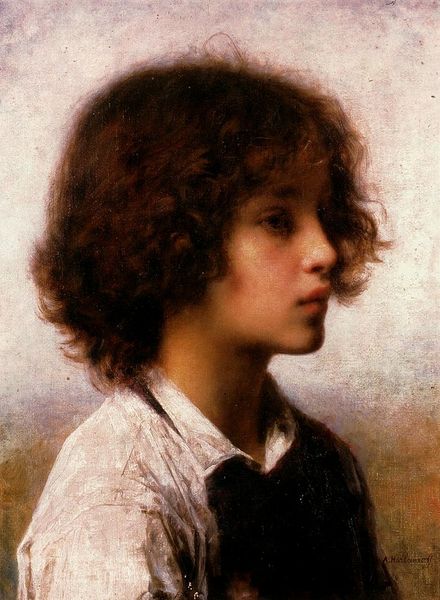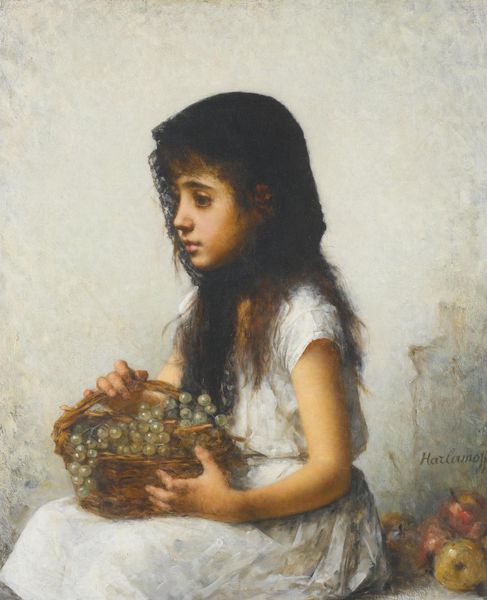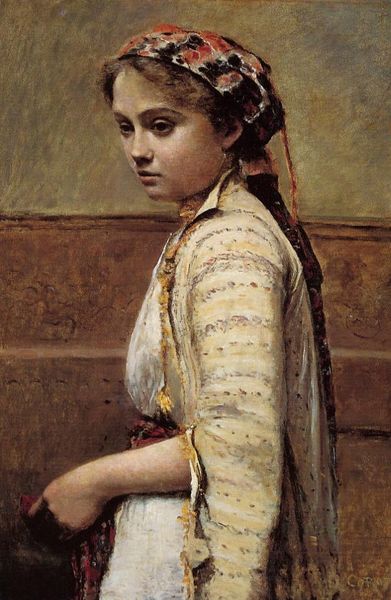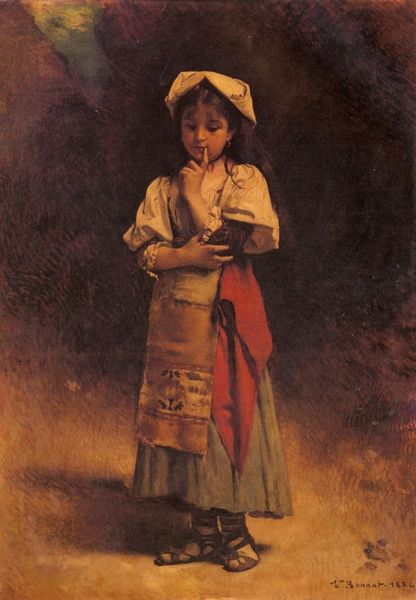
Copyright: Public domain
Curator: Eastman Johnson's 1859 oil on canvas, “Hannah amidst the Vines," offers a poignant glimpse into antebellum America through a stunning portrait. My immediate reaction? A curious intimacy, almost like we’re intruding on a private moment. Editor: It strikes me as less intimate, and more posed. Note the heavy, almost rough handling of the oil paint itself, particularly in the background foliage. It gives a real weight to the material presence of this world. One could almost reach out and feel the thickness. Curator: Interesting point. For me, the vine imagery is more than decorative. Vines symbolize connection, growth, and even dependency. Hannah's placement within them suggests a symbolic weaving of her identity with the land and its, well, burdens, during this era. What are your thoughts about the beads? Editor: Ah, the beads. Materially speaking, consider their manufacture and trade routes – glass beads from Europe, likely acquired through specific economic transactions in this specific local environment. These aren’t just decorative; they're representative of a complicated commodity chain, an embodiment of material consumption during that historical period. Curator: I’d agree to a point; there's no question that material culture reflects economic realities. But look closer: Hannah clutches the beads, almost nervously. The necklace feels less like a celebratory adornment and more like a chain, subtly alluding to the complex and oppressive dynamics shaping the lives of African Americans. The averted gaze reinforces a sense of internal reflection—or, arguably, a suppression of the self. Editor: Possibly. But, and this is vital: we can’t romanticize oppression. Look at the physicality of the work. This is, fundamentally, about the *application* of oil paint onto a support – the social context in which this skill-set becomes codified, valued, exhibited, purchased—and the way materials become an expression of cultural and social values in themselves. Johnson, in employing a ‘rougher’ finish in certain areas, subtly implies the labor invested, pushing against classical standards of ‘polish’. Curator: So, you are focusing on technique versus content? Editor: Not technique *versus* content. The technique, the medium, the materials *are* the content, or contribute significantly to the message transmitted. In my understanding of the subject's experience, this contributes vital nuances in how we are capable of imagining and interpreting her conditions of existence at that moment in time, since, ultimately, it gives it concrete texture, scale, and impact. Curator: Perhaps we’re both partly right. Johnson’s brushstrokes certainly speak to a certain historical understanding of artistic labor, but that can not overshadow the narrative suggested through her gaze, which, given the time and context, evokes silent protest in confinement, a shared cultural memory and consciousness, a sense of endurance... Editor: Indeed, this materiality embodies, both figuratively and literally, a moment rife with social tensions, while serving, in its making, to reproduce these same relations. Curator: A potent reminder of how visual language speaks volumes! Editor: And that the language is just as much what goes *into* its making, too.
Comments
No comments
Be the first to comment and join the conversation on the ultimate creative platform.

